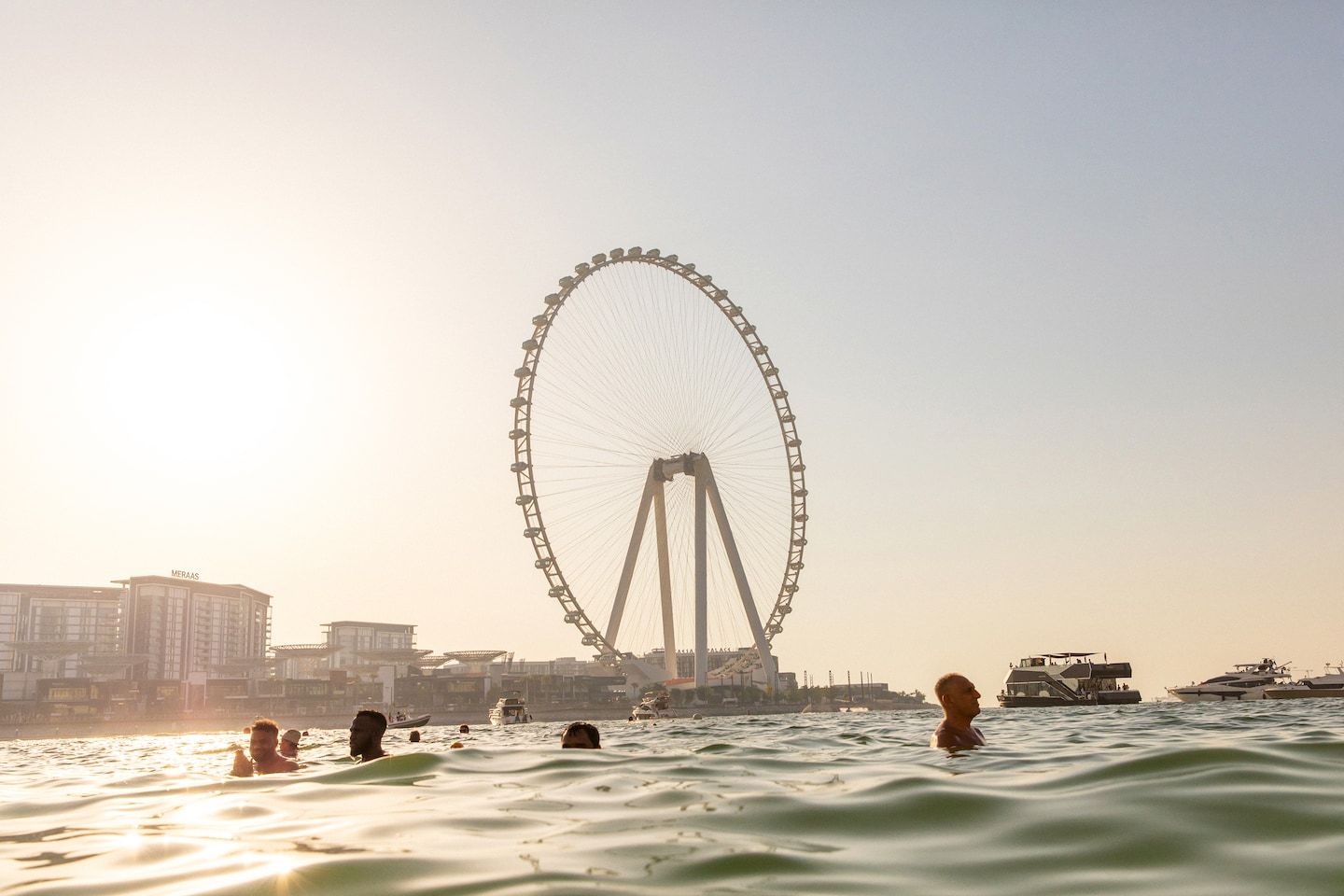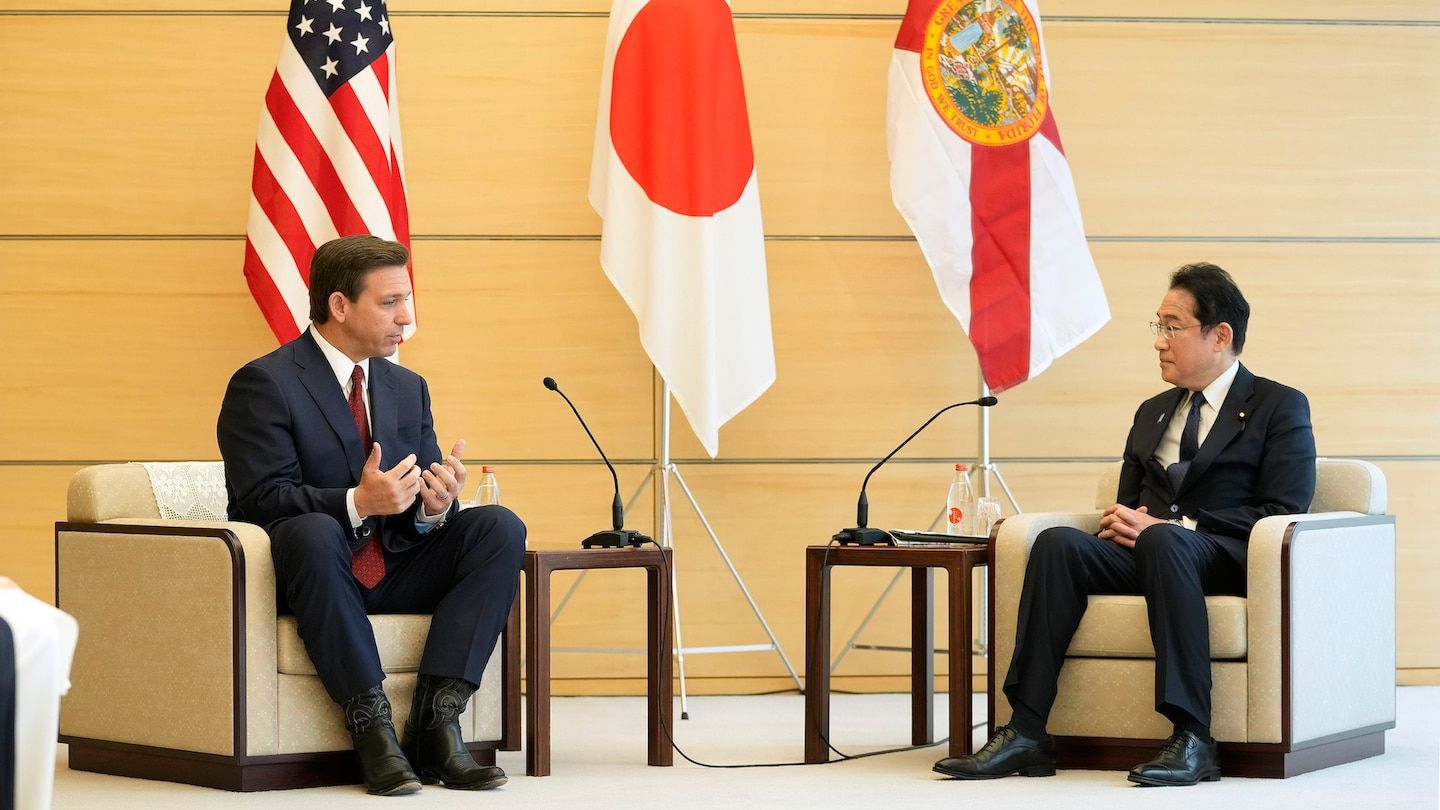Ain Dubai: The mystery of the world’s largest broken Ferris wheel
Middle East The mystery of the Ain Dubai, the world’s largest (broken) Ferris wheel The Ain Dubai, the world’s largest Ferris wheel, on July 1 as it stands inoperative on Bluewaters Island in Dubai, as it has for more than a year. (Andrea DiCenzo for The Washington Post)
Listen 6 min Comment on this story Comment Gift Article Share
DUBAI — It has been more than a year since the world’s tallest Ferris wheel stopped turning, and officials here won’t say why. With more steel than the Eiffel Tower contains and nearly twice the height of the London Eye, the Ain Dubai was supposed to be closed for just a month. Then another month. And another. Finally, in April, operators quietly announced it would be closed indefinitely.
The massive legs of this engineering marvel are gathering dust, while scaffolding shrouded in burlap surrounds the main axle.
As the centerpiece of an artificial island boasting some of Dubai’s most expensive real estate, the sense of abandonment is uncanny. Luxury apartments, fine dining, retail shops, a mall, a Caesar’s Palace where it is assumed gambling will one day be permitted in this Islamic jurisdiction — all were built around the titanic disk. Nothing has been said publicly about the wheel, highlighting a broader culture of secrecy around high-profile projects in the United Arab Emirates, undertakings that are often paused or razed without explanation. (Dubai is one of seven emirates that make up the UAE.)
Advertisement
Dubai’s residential real estate market is red-hot these days, riding high on an influx of capital from wealthy foreigners, including Russians who have flocked to the Persian Gulf in large numbers since the start of the war in Ukraine, seeking refuge from international sanctions. More homes priced at $10 million or more were sold here in the first quarter of 2023 than anywhere else in the world, according to one recent estimate.
But the story of the wheel evokes memories of past property busts. Critics describe a development scene built on hype and headlines, highly speculative, opaque, often overleveraged, and overseen by officials who refuse to acknowledge mistakes and gloss over failures with shiny new projects — often leaving investors on the hook.
In this city of superlative structures, including the world’s tallest building, the Burj Khalifa, the Ain fit right in when it was unveiled in October 2021. It quickly dominated the official skyline — displayed in ads, road signage, and promotional pitches to tourists. Now, its home on Bluewaters Island attracts small crowds on most weekend nights. The island’s multilevel underground parking garage rarely fills; its shopping mall is mainly a hangout for bored store clerks.
“The problem with building the world’s largest anything is that when you extend beyond a certain scale, you enter the unknown, where issues that are normally minor can become suddenly major,” said Aled Davies, the director of postgraduate teaching in Cardiff University’s engineering program. “But there’s no information on this, so who knows — it could be material issues, it could be surprise additional stresses on the bearing from wind or structural movement beyond what it was intended to manage.”
Advertisement
In the absence of official information, residents of Bluewaters Island have been left guessing. Some say the Ain started vibrating loudly during the five months it was operational. Others claim the giant structure shook the ground when it turned. One shopkeeper said the shaking shattered windows. Others fear the foundation has been compromised. All spoke on the condition of anonymity, fearing repercussions from the UAE’s image-conscious authorities.
“I’ve lived here for two years, and I’ve had zero notification about what’s happening,” said one resident with an apartment facing the Ain.
“We don’t hear anything official,” said another resident. “Some from the building management say something broke inside the main axle mechanism, and others say it is sinking. I’ve heard hotel managers in the beach area facing the wheel say they’re calculating risk and damage estimates for the possibility that it falls.”
More than 800 feet high, the Ain was built to carry 1,400 passengers, offering private cabins for dinners, corporate events and posh parties. Now, it’s unclear what revenue the wheel and the surrounding area will generate.
Built by a consortium including South Korea’s Hyundai Engineering, Canada’s WSP, the local developer Meraas and the Netherlands-based observation wheel specialists Starneth, the Ain Dubai is owned by Dubai Holding, the investment portfolio of Dubai’s ruler, Sheikh Mohammed bin Rashid al-Maktoum. Contacted repeatedly over several months, each of the companies involved declined to comment on what happened to the Ain or how it would be repaired.
Germany’s Technical Inspection Association, or TUV, confirmed that it was involved in the Ain’s construction but had withdrawn its certification for the structure. The group, which tests and provides independent safety certifications for a variety of technical systems, gave no further comment, saying it was bound by a nondisclosure agreement. The Ain’s media office did not respond to requests for comment.
Advertisement
Last winter, another seaside locale built by the same developers abruptly closed and is being demolished to make room for a new hotel. Several other recent developments — some fully built and others unfinished — remain in official limbo, their unused cranes and exposed rebar still reaching hopefully toward the sky.
Just down the road from the Ain sits the site of the Dubai Pearl, a $4 billion project to build four residential and commercial towers connected at the top by a giant, multistory platform. It, too, is being demolished after two decades of off-and-on construction work; when explosives were used recently to blow up parts of the structure, some nearby residents thought there was an earthquake.
The run of high-profile failures has evoked memories of the years following the 2008 financial crisis, when the Dubai real estate market crashed, plunging the city-emirate into debt and requiring a bailout from the emirate of Abu Dhabi.
“There’ve been plenty of failed projects far after the 2008 crisis,” said Frederic Schneider, an economist who wrote a paper recently describing Dubai’s economy as overly reliant on luxury real estate.
“Since the relationship between Dubai-based developers and the Dubai government is very porous, a strain on one is a strain on the other,” he said. “This whole story highlights the gamble that the laser focus on top-end real estate development creates for the entire Dubai economy.”
Advertisement
But for a city that has staked its global reputation on the next big thing, there is always an incentive to keep building: In late May, authorities announced that a new masterplan had been completed for a long-stalled second Palm Island — modeled after the city’s world-famous Palm Jumeirah.
The Ain, meanwhile, continues to dazzle each night with LED light shows that can be seen from miles away. Tellers at information booths smile and say, vaguely, that it will reopen soon.
“I think the sheikhs wouldn’t want to move it, so as not to lose face,” said Oleg, a Bluewaters resident. “It is after all, a landmark, so I imagine it will remain here.”
Source: The Washington Post


